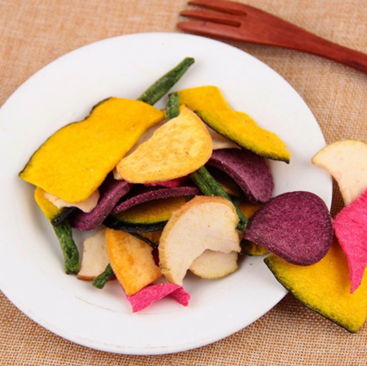Let’s not lie to ourselves; fried food and snacks are delicious! There’s something about the crispy crunch that’s very difficult to let go of. However, its bad effect is also buried in our minds. Therefore, more and more snack manufacturers are finding ways to produce less greasy, healthier, but still crunchy and finger-licking food. Vacuum fry technology has proved to be a great alternative.
Today, we will explore this technology and see how it’s being used to provide healthier snacks!
What Is Vacuum Fry?
In simple terms, vacuum fry technology is an alternative for frying food. Vacuum frying consists of placing food in a vacuum chamber. When it’s in there, the food is cooked at a lower temperature than traditional frying. Also, the pressure inside the vacuum chamber is lower than the atmospheric pressure. This is how the food gets dehydrated to perfection to make crispy and delicious snacks. It also requires very little oil, if at all.
5 Advantages of Vacuum Fry Technology
Now, there are many good reasons why companies are adopting this technology to make vacuum-fried chips of all kinds:
1. The food keeps all of its nutrients
Did you know that, after processing foods with methods like frying, synthetic nutrients (vitamins and minerals) have to be added to the food? That’s because these processing methods destroy the nutrients. But that’s not the case with a vacuum fry. The lack of high temperatures allows vitamins and other heat-sensitive nutrients to survive. In other words, most of the natural nutrients of the fruits and veggies will still be there when the food processing is at low temperatures, that is to say, adopting vacuum fry technology.
2. The dehydration time is shorter
Compared to other dehydration methods, vacuum fry technology does the job much faster. The low temperature and pressure will remove the moisture from the food more effectively and quickly.
3. A minimum amount of oil is used
Another great thing about vacuum frying is that it requires a lot less oil. Compared to traditional frying, 70 to 80 per cent less oil is needed. The less oil in the snacks, the less fat the body will absorb. This can help decrease bad cholesterol, the risk of heart disease, and more.
4. The snacks are a lot more flavorful
When people eat fruit or veggie snacks, they should be able to taste the ingredients. The beauty of vacuum fry technology is that it allows snacks like vacuum-fried chips to be more flavorful. Additionally, the flavour is much cleaner and sharper due to the lack of oil.
5. The food is stripped of carcinogens
Once it reaches a certain temperature of around 200ºC, oil breaks down into unstable chemicals. Those unstable chemicals can lead to a lot of health problems, including heart disease and cancer. Vacuum fry technology keeps the temperatures very low, so the oil doesn’t get the chance to break down. This makes vacuum-fried veggies and fruit snacks healthier by a long mile.
The Application of Vacuum Fry Technology
Vacuum fry technology is used mainly in the food industry to produce fruit and vegetable snacks, including healthy veggie chips and fruit chips. It has risen in popularity as an alternative to traditional frying methods. While it’s an investment, this food processing technology is worth every penny. It’s more efficient, faster, and makes healthier products. So, if you’re in the business, you have a lot to gain from adopting this method.
Kaida Hengye: The Taste of Vacuum Fry
If you’re curious to know if vacuum-fried chips live up to the hype, we,Kaida Hengye is a good option. This is a professional manufacturer that offers a variety of wholesale vacuum-fried vegetable chips, including potato sticks, okra chips, pumpkin crisps, and much more. They also have wholesale vacuum-fried fruit chips, such as apple crisps, which are simply delicious.
Browse the variety of Kaida Hengye products here and dive into the world of vacuum-fried chips!
Sources
https://www.foodinfotech.com/a-brief-overview-on-vacuum-frying-technology-its-uses-in-food-industry/
https://www.foodinfotech.com/effects-of-vacuum-frying-technology-on-the-quality-of-foods-an-overview/



